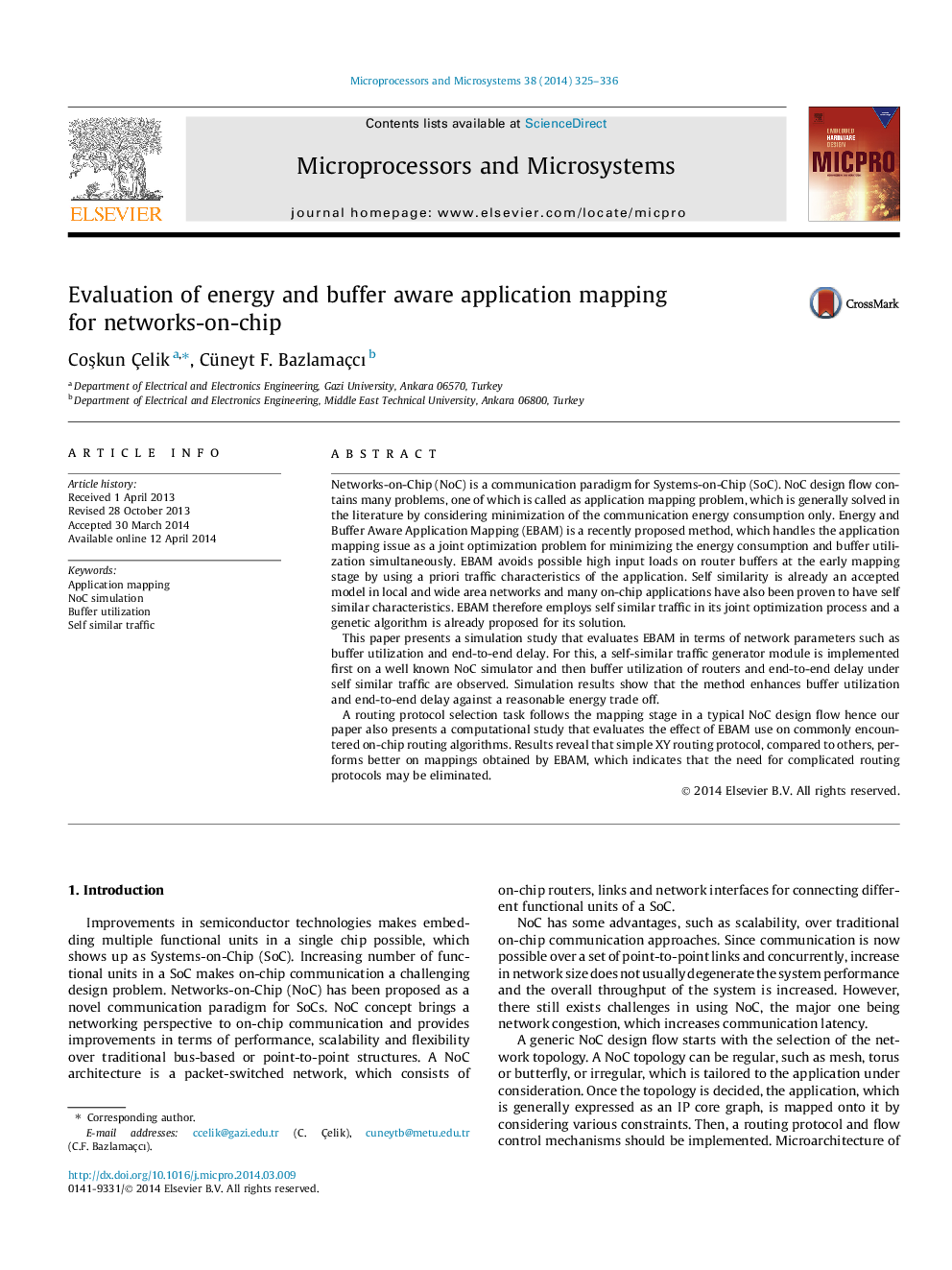| Article ID | Journal | Published Year | Pages | File Type |
|---|---|---|---|---|
| 462747 | Microprocessors and Microsystems | 2014 | 12 Pages |
Networks-on-Chip (NoC) is a communication paradigm for Systems-on-Chip (SoC). NoC design flow contains many problems, one of which is called as application mapping problem, which is generally solved in the literature by considering minimization of the communication energy consumption only. Energy and Buffer Aware Application Mapping (EBAM) is a recently proposed method, which handles the application mapping issue as a joint optimization problem for minimizing the energy consumption and buffer utilization simultaneously. EBAM avoids possible high input loads on router buffers at the early mapping stage by using a priori traffic characteristics of the application. Self similarity is already an accepted model in local and wide area networks and many on-chip applications have also been proven to have self similar characteristics. EBAM therefore employs self similar traffic in its joint optimization process and a genetic algorithm is already proposed for its solution.This paper presents a simulation study that evaluates EBAM in terms of network parameters such as buffer utilization and end-to-end delay. For this, a self-similar traffic generator module is implemented first on a well known NoC simulator and then buffer utilization of routers and end-to-end delay under self similar traffic are observed. Simulation results show that the method enhances buffer utilization and end-to-end delay against a reasonable energy trade off.A routing protocol selection task follows the mapping stage in a typical NoC design flow hence our paper also presents a computational study that evaluates the effect of EBAM use on commonly encountered on-chip routing algorithms. Results reveal that simple XY routing protocol, compared to others, performs better on mappings obtained by EBAM, which indicates that the need for complicated routing protocols may be eliminated.
